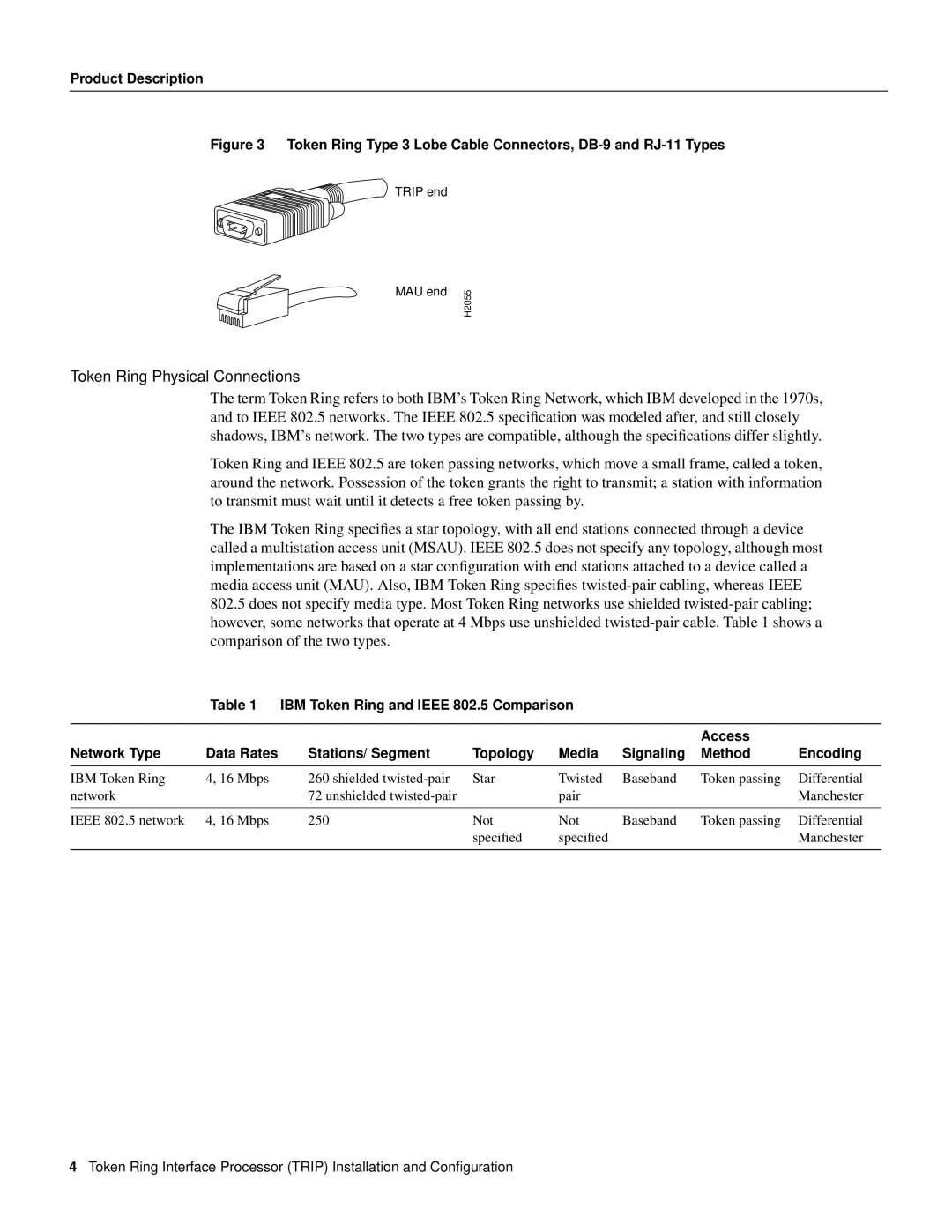
Product Description
Figure 3 Token Ring Type 3 Lobe Cable Connectors, DB-9 and RJ-11 Types
TRIP end
MAU end
H2055
Token Ring Physical Connections
The term Token Ring refers to both IBM’s Token Ring Network, which IBM developed in the 1970s, and to IEEE 802.5 networks. The IEEE 802.5 specification was modeled after, and still closely shadows, IBM’s network. The two types are compatible, although the specifications differ slightly.
Token Ring and IEEE 802.5 are token passing networks, which move a small frame, called a token, around the network. Possession of the token grants the right to transmit; a station with information to transmit must wait until it detects a free token passing by.
The IBM Token Ring specifies a star topology, with all end stations connected through a device called a multistation access unit (MSAU). IEEE 802.5 does not specify any topology, although most implementations are based on a star configuration with end stations attached to a device called a media access unit (MAU). Also, IBM Token Ring specifies
802.5does not specify media type. Most Token Ring networks use shielded
Table 1 IBM Token Ring and IEEE 802.5 Comparison
|
|
|
|
|
| Access |
|
Network Type | Data Rates | Stations/ Segment | Topology | Media | Signaling | Method | Encoding |
|
|
|
|
|
|
|
|
IBM Token Ring | 4, 16 Mbps | 260 shielded | Star | Twisted | Baseband | Token passing | Differential |
network |
| 72 unshielded |
| pair |
|
| Manchester |
|
|
|
|
|
|
|
|
IEEE 802.5 network | 4, 16 Mbps | 250 | Not | Not | Baseband | Token passing | Differential |
|
|
| specified | specified |
|
| Manchester |
|
|
|
|
|
|
|
|
4Token Ring Interface Processor (TRIP) Installation and Configuration
